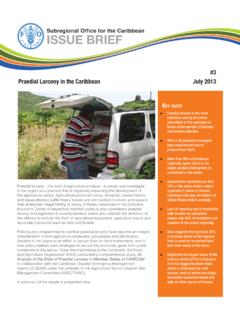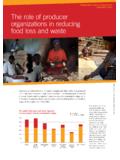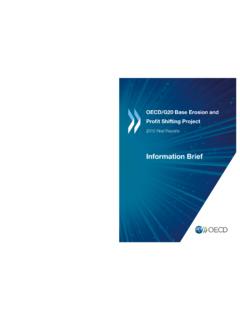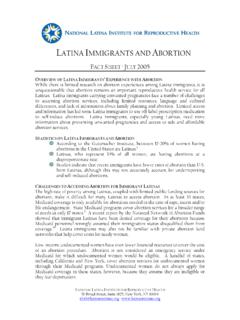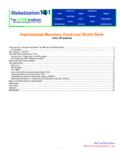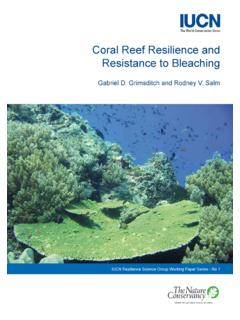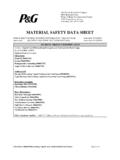Transcription of December 2014 MENT BRIEF - RESOURCE GUIDE
1 0 | Violence Against Women and Girls (VAWG) RESOURCE GUIDE | Introduction INTRODUCTION December 2014 ment BRIEF | Violence Against Women and Girls (VAWG) RESOURCE GUIDE | Introduction INTRODUCTION AND GENERAL TOOLSI ntroduction Violence against women and girls (VAWG) is one of the most oppressive forms of gender inequality and stands as a fundamental barrier to equal participation of women and men in social, economic, and political spheres. Such violence impedes gender equality and the achievement of a range of development outcomes. VAWG is a complex and multifaceted problem that cannot effectively be addressed from a single vantage point. The prevention of, and response to, such violence requires coordinated action across multiple sectors.
2 This RESOURCE GUIDE was developed through a partnership between the Global Women s Institute (GWI) at George Washington University, the Inter-American Development Bank (IDB), and the World Bank Group (WBG). The primary audiences for the GUIDE are IDB and WBG staff and member countries, as well as other development professionals who do not yet have experience addressing VAWG. The purpose of this GUIDE is to provide the reader with basic information on the characteristics and consequences of VAWG, including the operational implications that VAWG can have in several priority sectors of the IDB and WBG. It also offers guidance on how to integrate VAWG prevention and provide quality services to violence survivors across a range of development projects.
3 Lastly, it recommends strategies for integrating VAWG prevention and response into policies and legislation, as well as sector programs and projects. More than 35% of women worldwide have experienced either physical or sexual partner violence or non-partner sexual violence. That is 818 million women - almost the total population of sub-Saharan Africa and almost three times the population of the United States. Sources: WHO (2013) Global and regional estimates of violence against women: Prevalence and health effects of intimate partner violence and non-partner sexual violence. Klugman, J., Hanmer, L., Twigg, S., Hasan, T., McCleary-Sills, J., and Santa Maria, J. ( 2014 ). Voice and Agency: Empowering Women and Girls for Shared Prosperity.
4 Washington, DC: World Bank. 2 | , Integrate, Innovate This RESOURCE GUIDE draws on existing global evidence and emerging promising practices. It should be noted, however, that the vast majority of the evidence (80%) on what works to prevent or respond to VAWG comes from high-income countries, according to a recent systematic review of reviews on this topic by GWI and The review also found that less than a quarter of randomized controlled trials (RCTs) and quasi-experimental studies assessed interventions in developing countries. Nonetheless, the current evidence, combined with promising initiatives, provide robust entry points for action while the insufficiency of data is overcome.
5 Readers are encouraged to review the key information on safety, ethics, and the do no harm principle, which is provided here in the introduction section. This RESOURCE GUIDE is not intended to be exhaustive. Rather, it provides a starting point for integrating initiatives to address VAWG within sectoral work and refers interested readers to resources where more detailed technical information can be found. See Box 1. The Role of International Agencies International financial institutions (IFIs), other multilateral institutions, and bilateral donors have a vital role to play in preventing and addressing VAWG in both low- and middle-income countries. These institutions are in the unique position of having the global reach to generate and disseminate knowledge, leverage partnerships with governments and a range of other key stakeholders, and lead by financing innovative Because of their global influence, IFIs are uniquely positioned to promote evidence-based good practices.
6 Not only can they leverage partnerships with governments to create a space for policy dialogues on addressing VAWG, they can also act as pioneers in promoting integrated and multi-sectoral approaches to addressing this issue. Lessons learned and evaluations of VAWG projects (or components of projects) can readily be shared across countries such findings can, in turn, promote investment in effective strategies for preventing and responding to violence. Box 1. An important note for the reader This RESOURCE GUIDE is grounded in the understanding that the reader is not a specialist on preventing violence against women and girls, and in the recognition that the strategic objectives of many development projects will not be centered on VAWG prevention and response.
7 However, beyond being a violation of human rights, VAWG can impede development projects from achieving the greatest possible impact by hindering the contribution of beneficiaries, particularly women, to project goals. In light of this fact, the basic principles of this RESOURCE GUIDE are that a) not all suggested activities need to be (or should be) implemented at once; one or two may suffice to start; and b) project staff should harness the available evidence, expertise, and experience to assist them with operationalizing some of the suggestions in each sector..the promotion and protection of, and respect for, the human rights and fundamental freedoms of women, including the right to development, which are universal, indivisible, interdependent and interrelated, should be mainstreamed into all policies and programs aimed at the eradication of poverty.
8 Source: Commission on the Status of Women: Fifty-eight session. (10-21 March 2014 ). Challenges and achievements in the implementation of the Millennium Development Goals for women and girls: Agreed conclusions. 3 | Violence Against Women and Girls (VAWG) RESOURCE GUIDE | Introduction GETTING STARTED The RESOURCE GUIDE is divided into the following sections: Introduction and General Tools The Introduction and General Tools section is an essential piece of the RESOURCE GUIDE relevant and applicable to all team leaders, specialists, and program managers, irrespective of their sector. It outlines the magnitude of VAWG, key definitions, risk and protective factors, socio-economic costs, the needs of survivors, as well as the role and value-added of IFIs in supporting VAWG prevention efforts.
9 In addition, this section includes: Guiding principles for data collection and working with VAWG survivors Guiding principles for VAWG programmingSector-Specific Guides The Sector Briefs provide guidance to help development professionals understand how VAWG affects programming in their sector, and offers suggestions for integrating VAWG prevention and response activities within each sector at the policy, institutional, and community level. The briefs also provide some detail about lessons learned from previous efforts to integrate VAWG, including those centered on working across multiple sectors. Appendices and resources The appendices include manuals, guidelines, and additional readings, as well as suggested indicators that have been agreed upon by international actors.
10 Using agreed upon, quantitative indicators is important to ensure comparability between measures used to monitor and evaluate the effectiveness of national legislations and programmatic interventions a practice that is still currently 4 | For further details on the different terminologies described below, please see the Annex 1, Key Terminology. The terms gender-based violence (GBV) and violence against women (VAW) are often used interchangeably, since most gender-based violence is perpetrated by men against women. GBV, however, includes violence against men, boys, and sexual minorities or those with gender-nonconforming identities. As such, violence against women (VAW) is one type of GBV.
